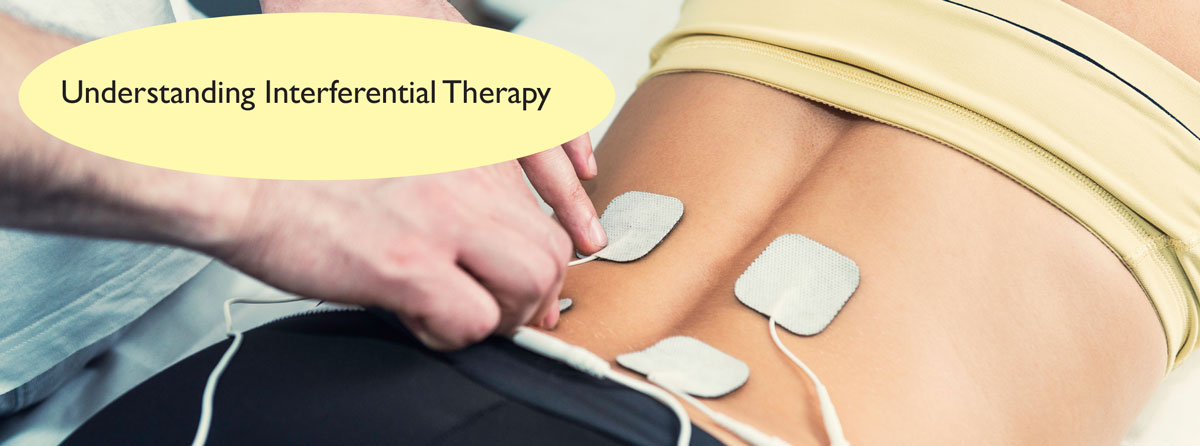Posted by Conchita Van Meurs
What is Interferential? Understanding the Basics

IFC vs TENS: What is the difference between TENS and IFC?
Interferential (IFT or IFC) is a medium frequency current used to control acute or chronic pain. So what does that mean?
It is difficult to talk about IFC without relating it to TENS (Transcutaneous Electrical Nerve Stimulation), as most people actually want to know "what is the difference?".
Simply put, they are more the same than different. IFC machines and TENS machines are used primarily for the same purpose and conditions and have the same contraindications.
Clinics often prefer to use Interferential as these frequencies are less likely to cause skin irritation or a "stinging" effect on the skin. Treatment times also tend to be shorter at about 15-20 minutes versus a typical 30 minutes for TENS.
There is evidence that with IFC, by adjusting the frequency produced in the "interference zone," it is possible to influence a range of different nerves and therefore improve outcomes.
How does Interferential work?
Like with TENS, the "Gate Control Theory" is the most common explanation for how it works.
Think of your nerves as a four-lane highway sending information from parts of your body to your brain. The slowest car on this highway carries the signal for pain. The faster cars send signals for touch, pressure, heat, or cold.
Electrotherapy currents like TENS and IFC add a bunch of high-speed "touch" cars to the highway blocking the old, slow "pain" cars from reaching their exit at the brain. This can provide hours of natural, drug-free pain relief.
What does it treat?
Considering how it works, it is easy to see why IFC can be used to manage most types of physical pain.
Some of the conditions that IFC can successfully help with include:
- Arthritis
- Back Pain
- Cervical (neck) pain
- Rheumatism Pain
- Diabetic Neuropathy
- Headache/Migraine
- Sciatica
- Tendinitis
- Fibromyalgia
Is it safe?
Yes. The amount of electrical current being used is not enough to shock you or harm the skin. However, patients with cancer, pregnancy, epilepsy, or pacemakers should avoid electrotherapy.
Electrodes should never be placed on the face, front of the neck, or the heart, as these regions may be affected by the current. Electrodes should not be placed on open wounds or in any area where you may have limited sensation.
How is it done?
Unlike TENS, IFC requires 4 electrodes to create the Interferential zone. Each channel (requires 2-channel unit) operates 2 electrodes (one positive and one negative). One of the channels maintains a constant medium frequency of about 4000 Hz while the other channel modulates its frequency.
For the electrode placement, in simple terms, X marks the spot (if X is the pain site). The idea is to cross the channels around the pain site as per the image below.

How often can I use IFC?
You can use an IFC device as often as you want to manage your pain. There are no known side effects to regular use other than some potential irritation where the electrodes are placed.
How much does a unit cost?
Interferential machines will typically be more expensive than their TENS equivalents. Prices vary depending on what else the unit does, the interface, and whether it is meant for clinical or home use.
Browse our Interferential devices here.

